Kai Yufuin by Kengo Kuma revisits Japanese farmhouse architecture
Hoshino Resorts has launched Kai Yufuin, a hot spring ryokan hotel by Kengo Kuma on the island of Kyushu in the Ōita Prefecture
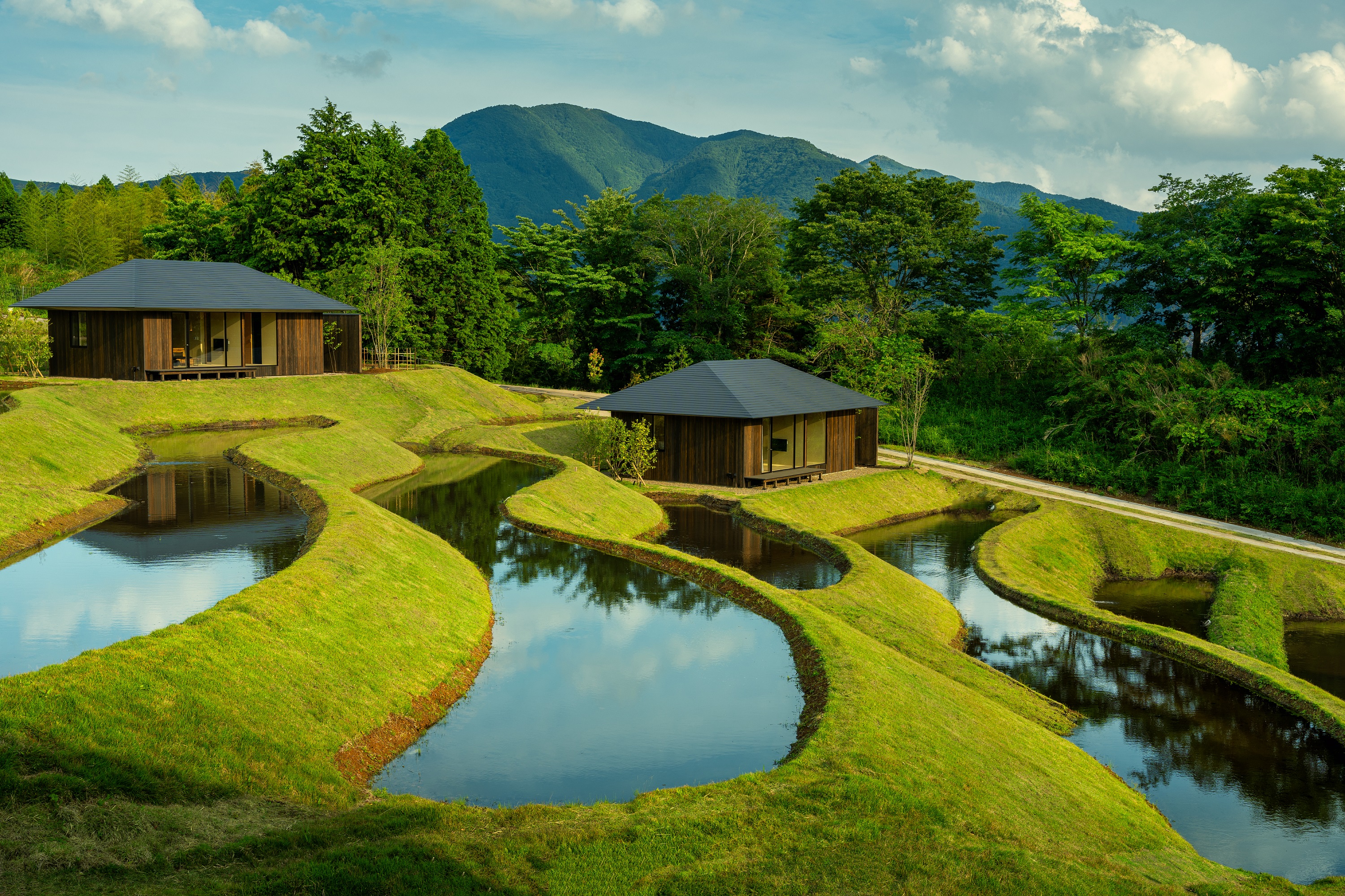
Built around a cascading valley of rice terraces that reflect the horizon’s endless play of colours, the Kai Yufuin hot spring ryokan by Hoshino Resorts, is one of Kengo Kuma & Associates' latest works. Composed of a public building, a bathhouse, guest rooms and separate villa suites, the project is defined by elements of traditional Japanese architecture and the region's farmhouse vernacular that form the basis of the design. Located on the island of Kyushu in the Ōita Prefecture, famous for its hot springs especially in and around the city of Beppu, the Yufuin valley basin has an abundant resource of mineral-rich water. Both these elements unite in this project to form the identity of Kengo Kuma's newest Japanese hospitality offering.
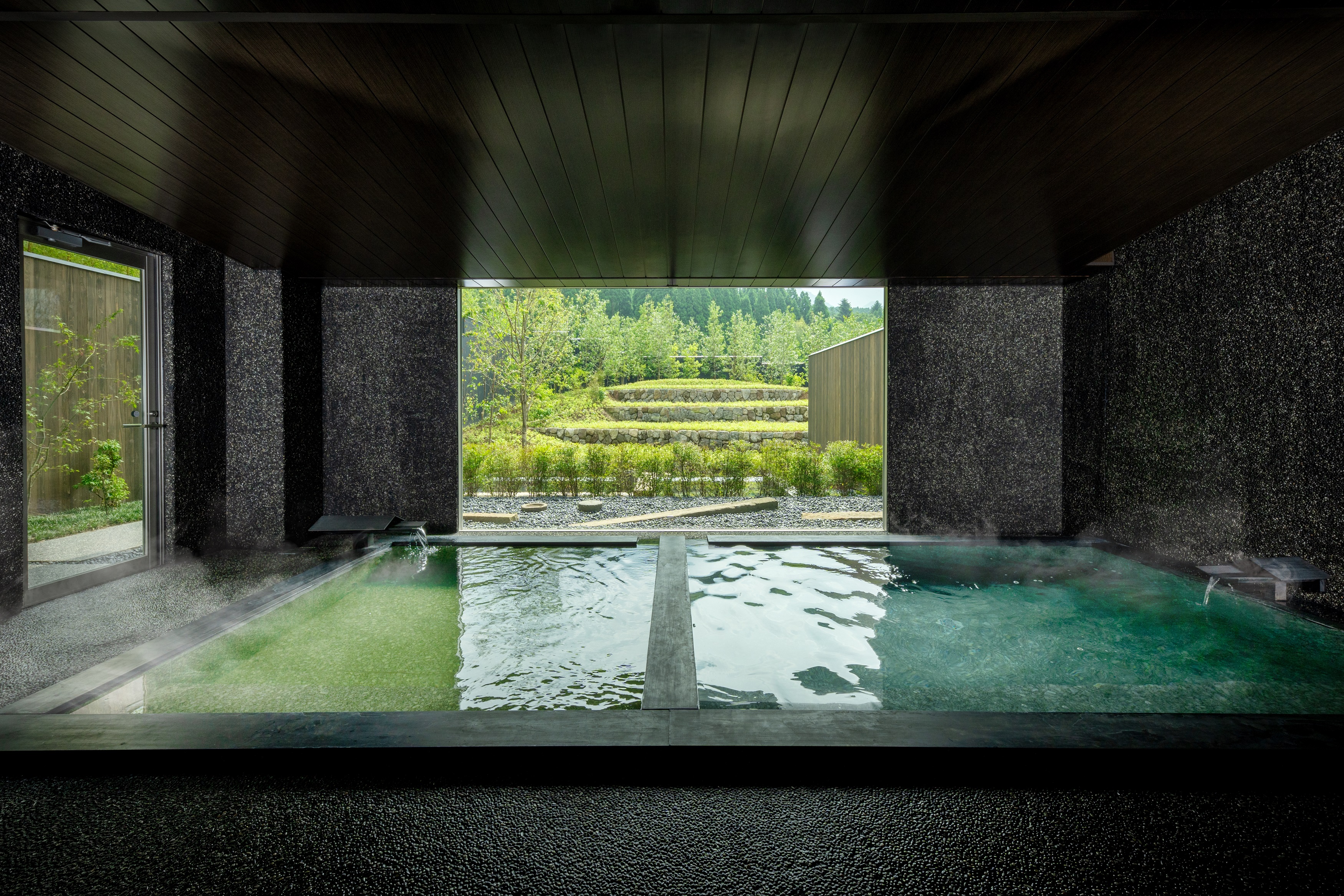
The lobby floor – made from a mixture of gravel, soil and lime – invokes tataki, or the traditional dirt floor entrance of an agricultural home; while the spherical shape of the front desk mimics kamado, the traditional farmhouse kitchen stove. Representative of an itama (room with wooden floor), the Travel Library has flooring made of bamboo, as well as lighting fixtures designed by Kuma from washi paper, inspired by the fluttering motions of local butterflies in the fields. Behind the library, the Rice Terrace Deck is a public space that looks out over the rice fields, with wooden flooring and seats composed of aromatic shichitoi (perennial grass) tatami, a material whose production and use are being revitalized in the region.
The vaporous indoor pool of Kai Yufuin’s bathhouse has dark, subdued colours, with black wood-grain panels plus walls and floors made of black pebbles, allowing the views of the imposing Mount Yufu to remain unadulterated. In the semi-private dining area, the walls are made of washi paper designed with local elements such as straw, rice, bamboo and shichitoi grass, once more evoking the aesthetics of a traditional farmhouse. The modest lighting, hanging over each table and made from wrinkled washi paper and thin bamboo sticks, is another Kuma original.
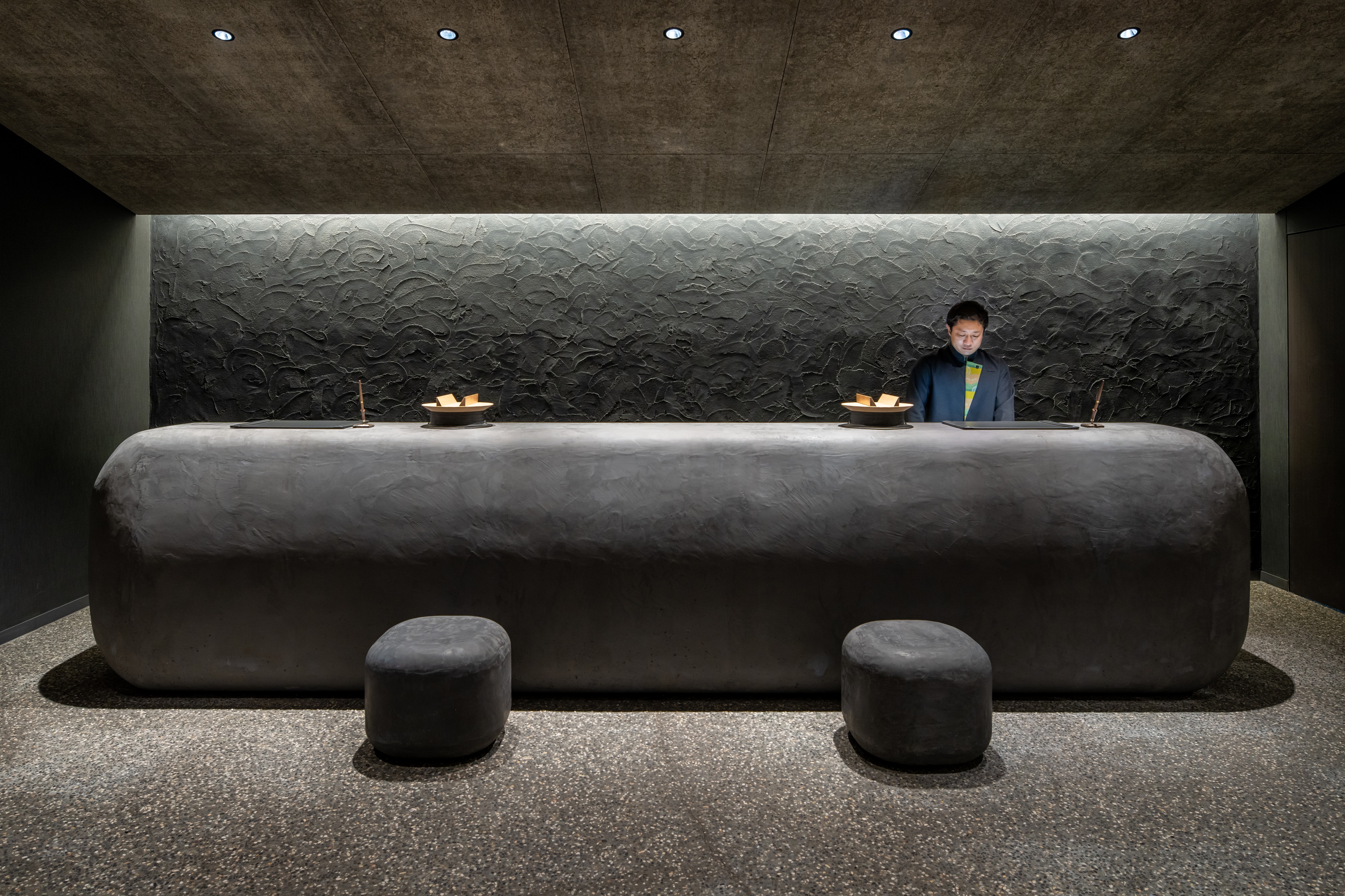
One of the most distinctive features of the property is its independent villa suites, bungalows nestled among the rice fields as single-storey farmhouses. Made of wood, the suites have a hipped roof shape – with black cedar planks typical of west Japan – which deviates from traditional Japanese architecture through the thin details of the eaves and the exterior's strong textures. The interior's cedar floors are finished with a technique called uki-zukuri, which allows the pattern of the wood to remain visible, while the veranda, in the back of the living room, opens it up further towards the landscape.
The structures, facing a Sawtooth oak forest, stand on a gentle slope and have their own private bathhouses made from cedar. Nodding to its location in a prefecture that produces the largest amount of giant bamboo timber in Japan, the hotel’s main guest building features rooms that are an expression of local bamboo crafts, and include bamboo headboards and sofas. Another distinct element in these rooms is the lighting, featuring a unique spiral shape made by shichitoi grass craftsman Chika Iwakiri and inspired by traditional firefly baskets, a further design detail directly connecting the property to its environment's rich heritage.
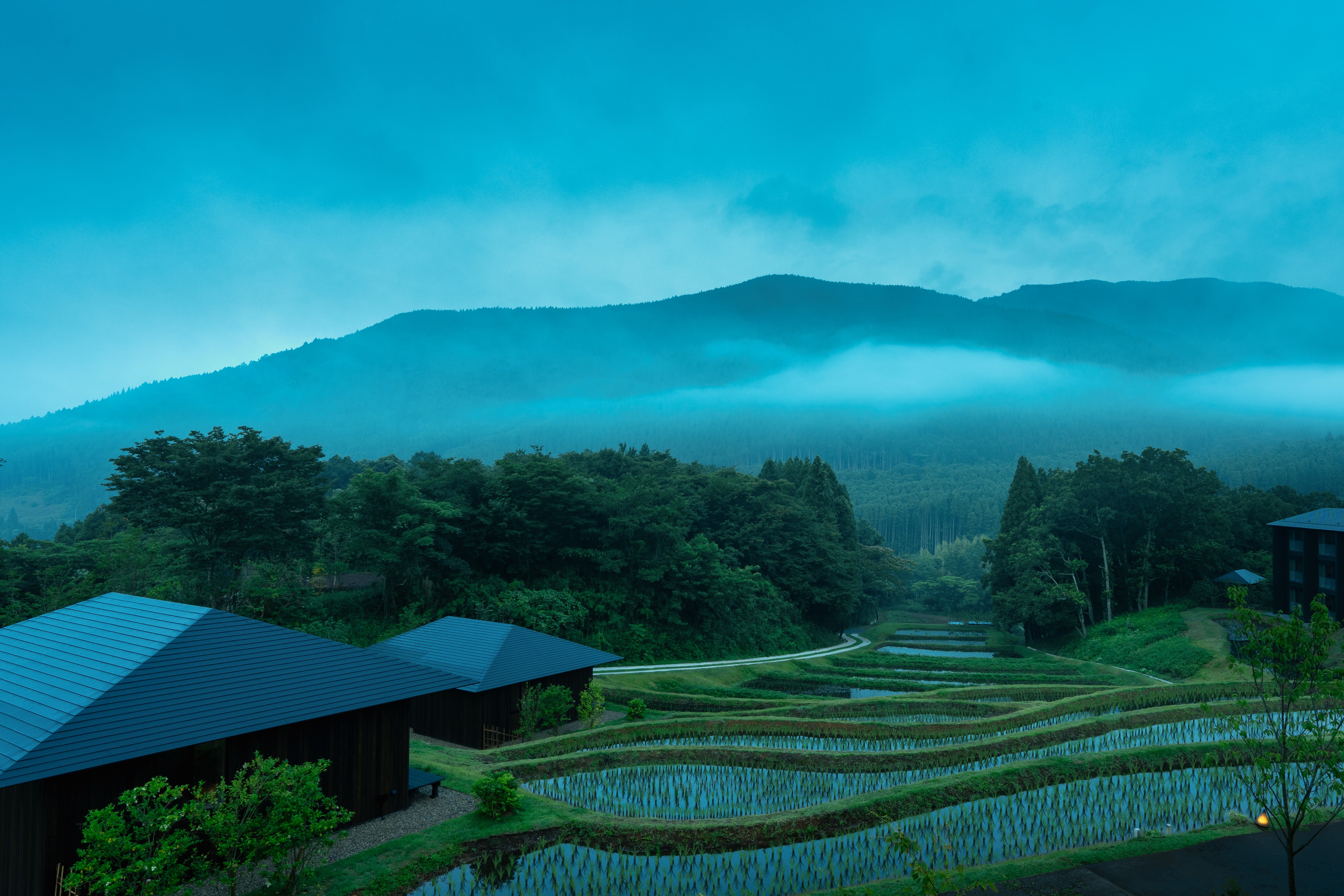
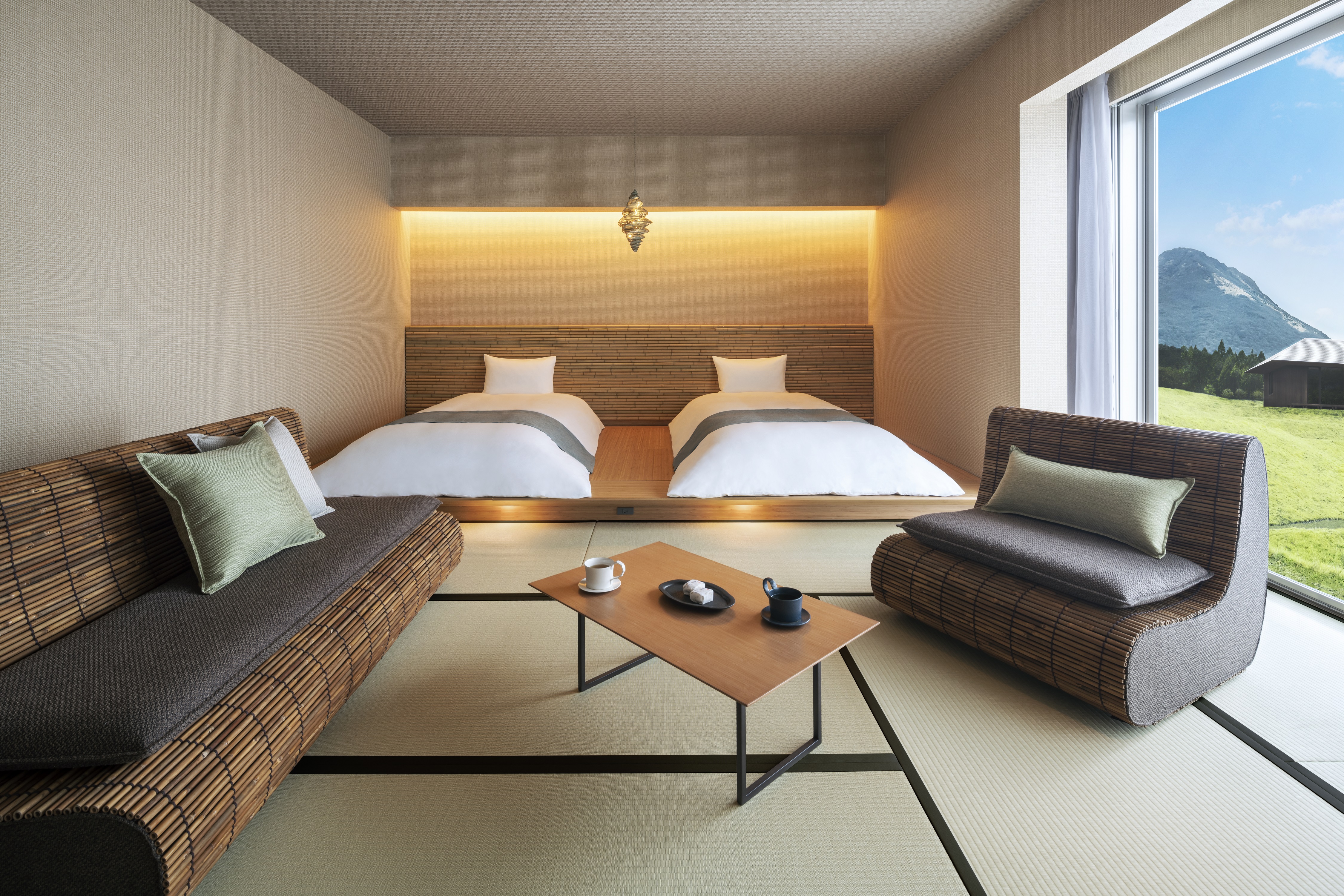
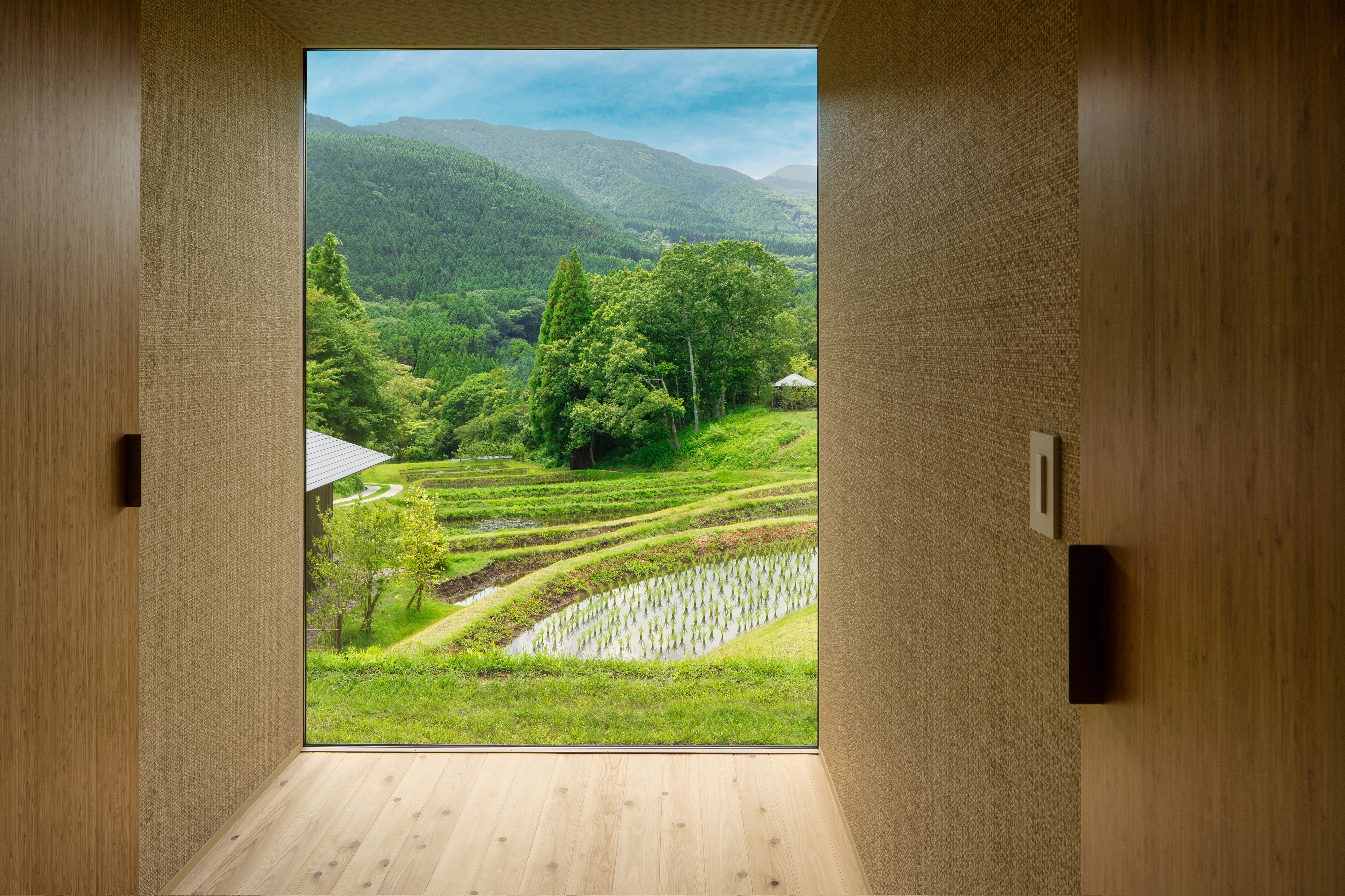
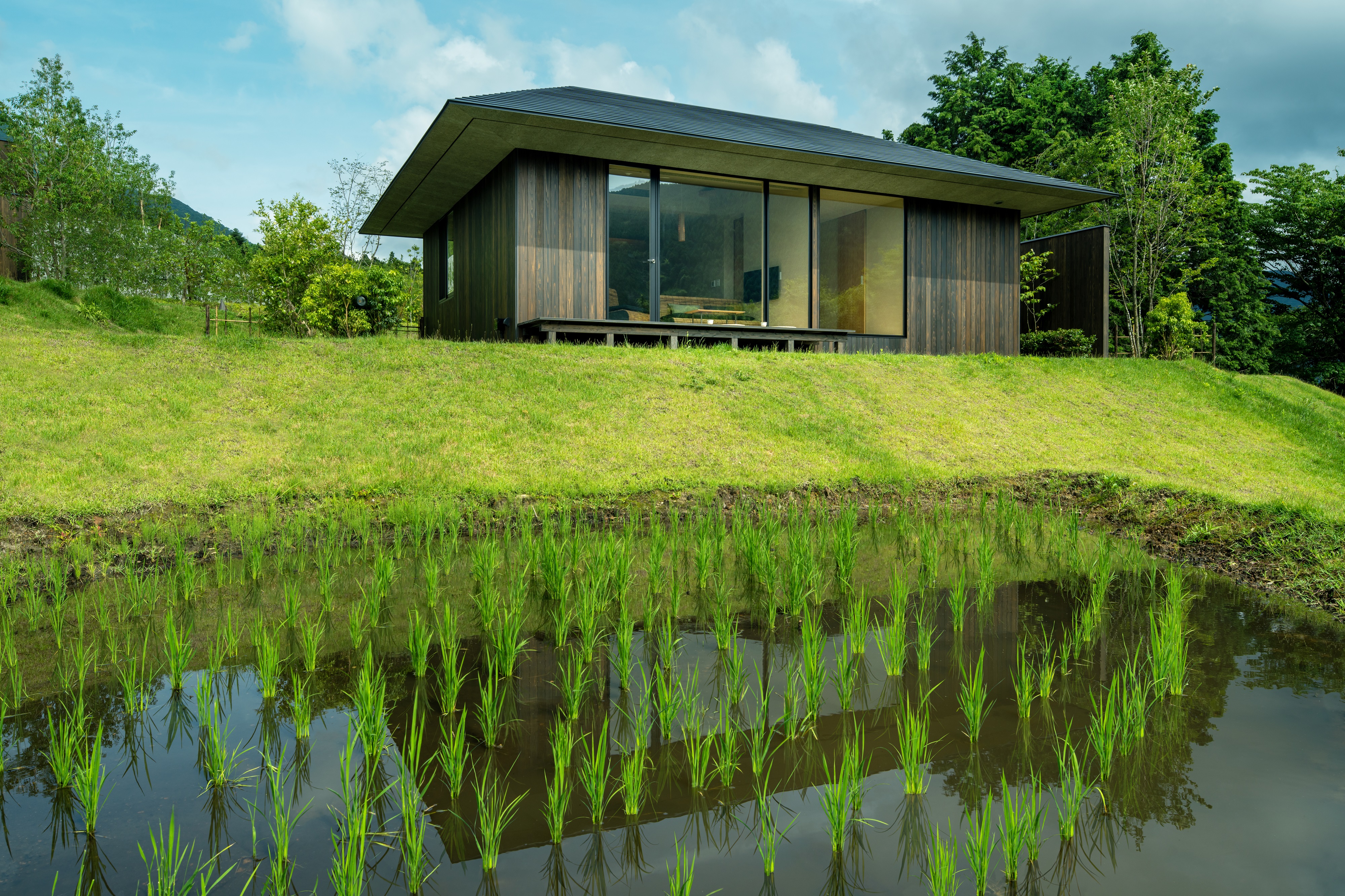
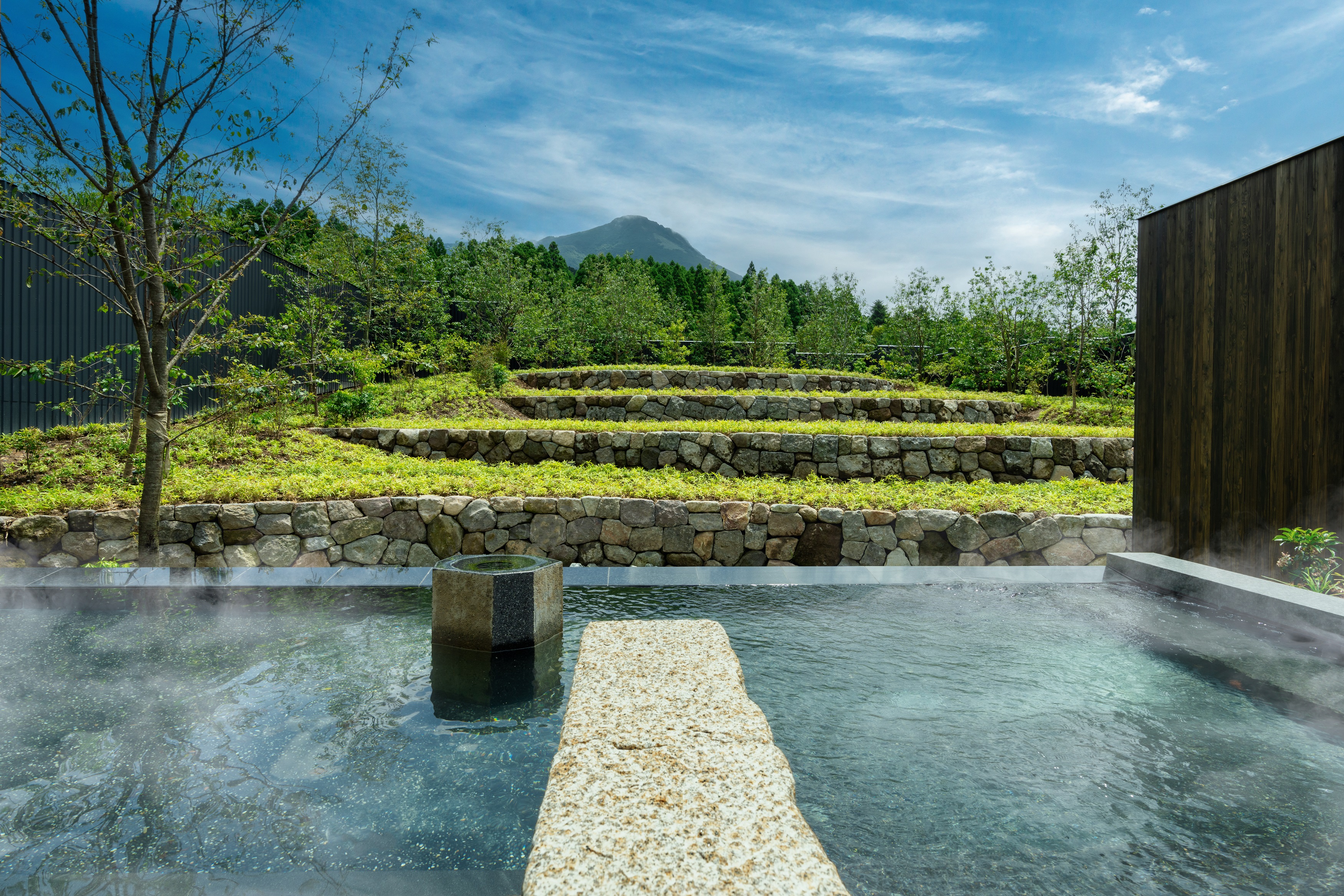
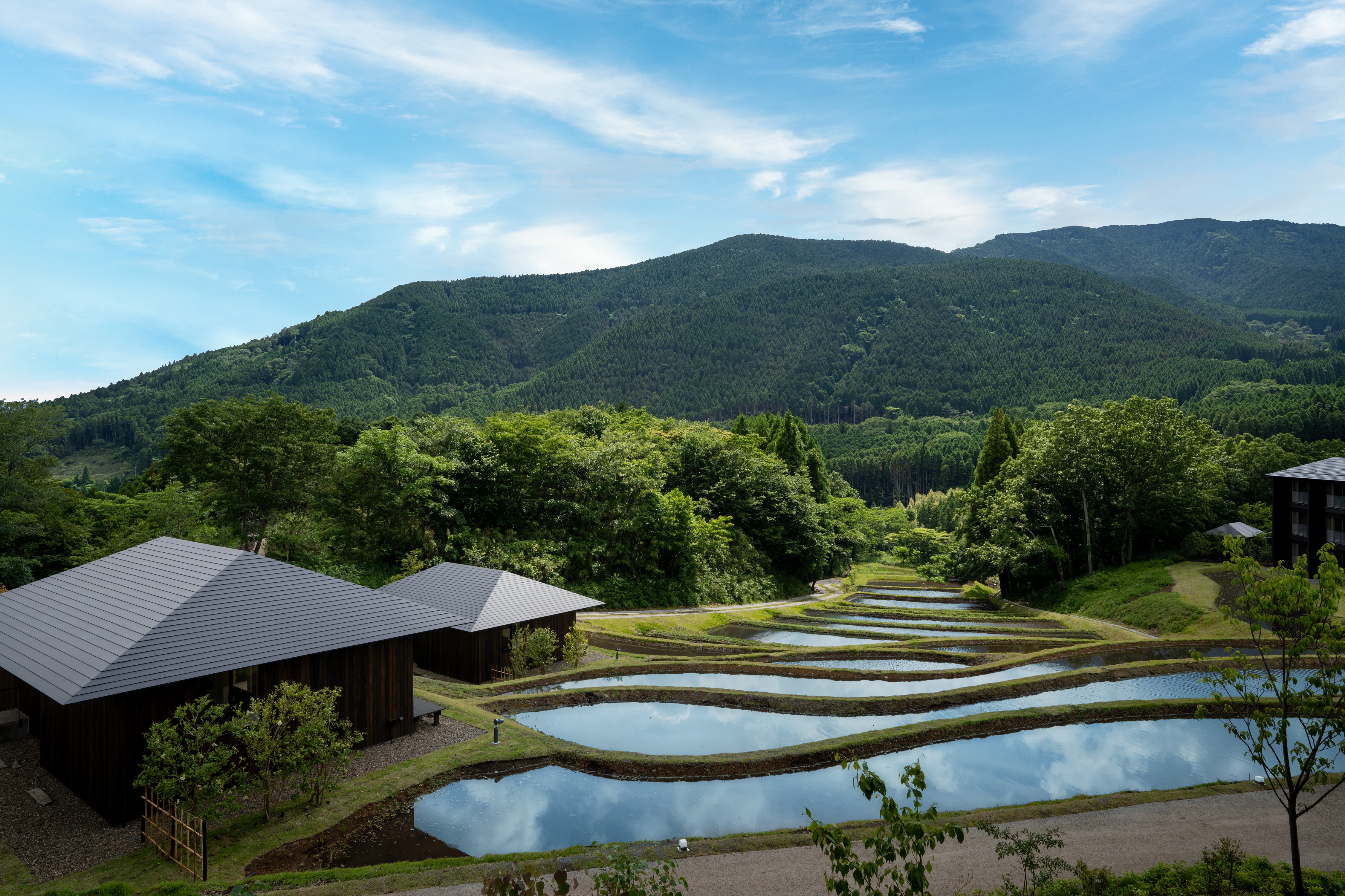
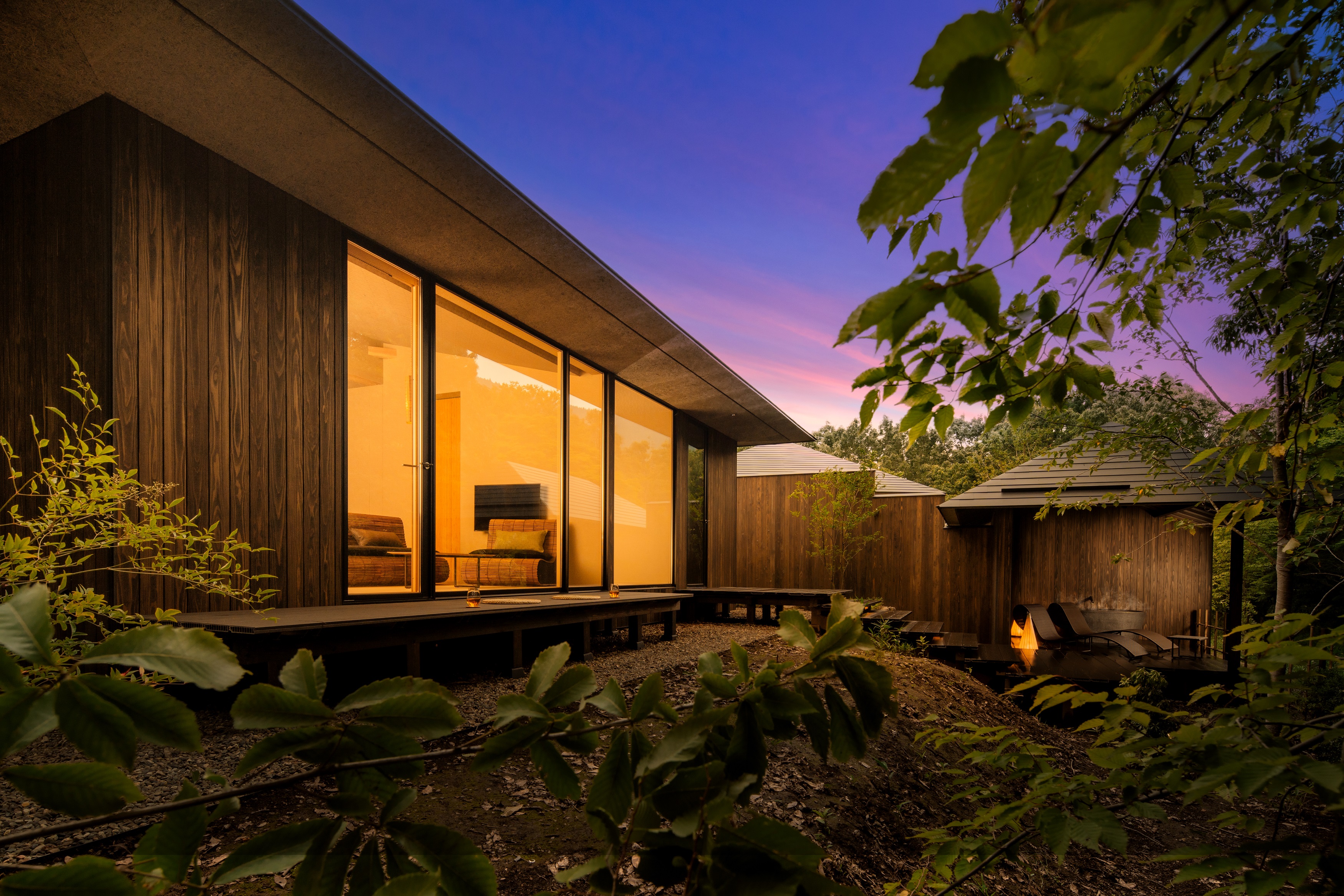
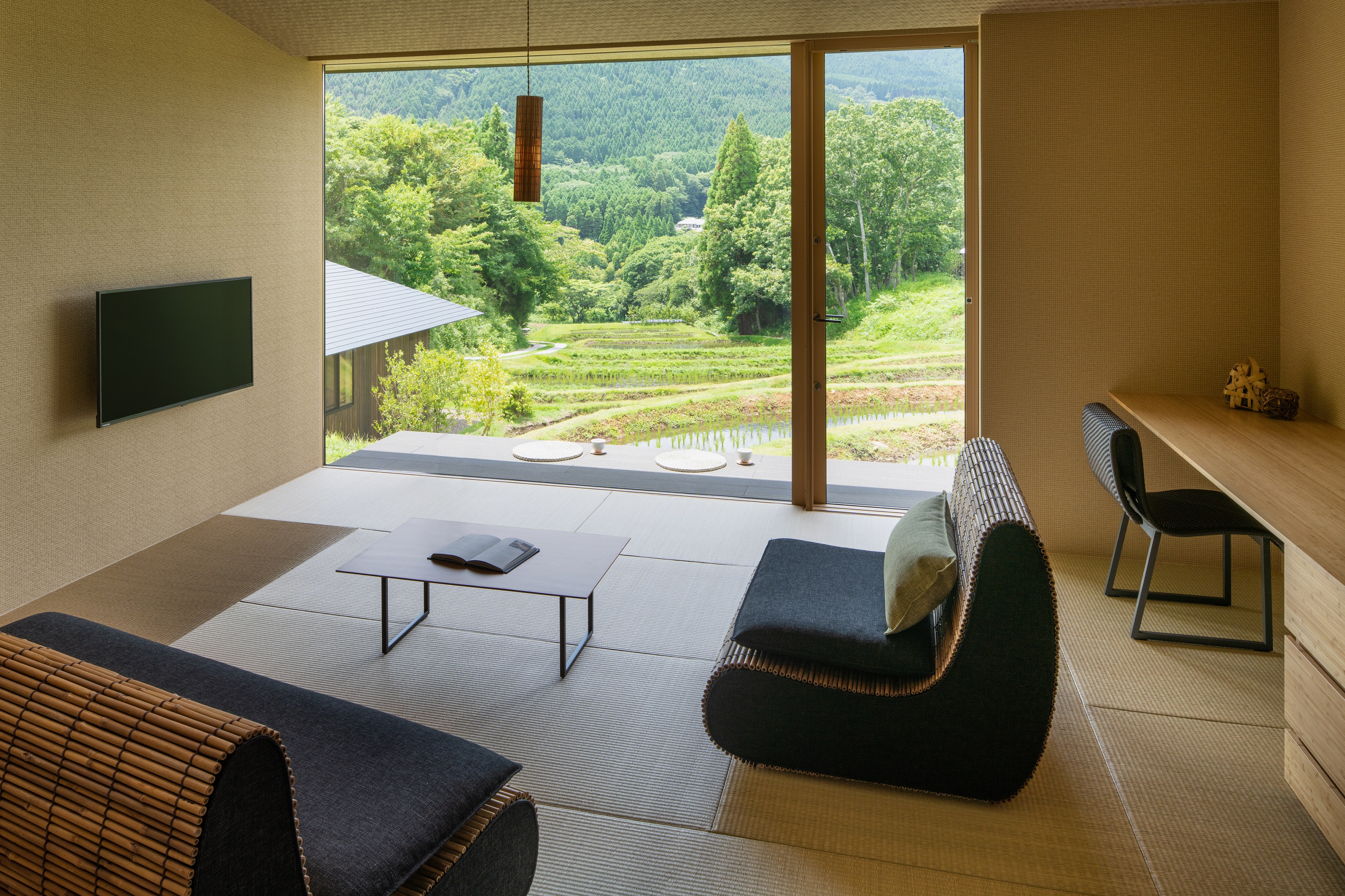
INFORMATION
Wallpaper* Newsletter
Receive our daily digest of inspiration, escapism and design stories from around the world direct to your inbox.
Feride Yalav-Heckeroth is a freelance travel writer based between Istanbul and Bodensee. Her writing has been published in Kinfolk, Brownbook, Travel + Leisure, CNN Travel and Conde Nast Traveler. She's also the author of her own guidebook, The 500 Hidden Secrets of Istanbul.
-
 The Lighthouse draws on Bauhaus principles to create a new-era workspace campus
The Lighthouse draws on Bauhaus principles to create a new-era workspace campusThe Lighthouse, a Los Angeles office space by Warkentin Associates, brings together Bauhaus, brutalism and contemporary workspace design trends
By Ellie Stathaki
-
 Extreme Cashmere reimagines retail with its new Amsterdam store: ‘You want to take your shoes off and stay’
Extreme Cashmere reimagines retail with its new Amsterdam store: ‘You want to take your shoes off and stay’Wallpaper* takes a tour of Extreme Cashmere’s new Amsterdam store, a space which reflects the label’s famed hospitality and unconventional approach to knitwear
By Jack Moss
-
 Titanium watches are strong, light and enduring: here are some of the best
Titanium watches are strong, light and enduring: here are some of the bestBrands including Bremont, Christopher Ward and Grand Seiko are exploring the possibilities of titanium watches
By Chris Hall
-
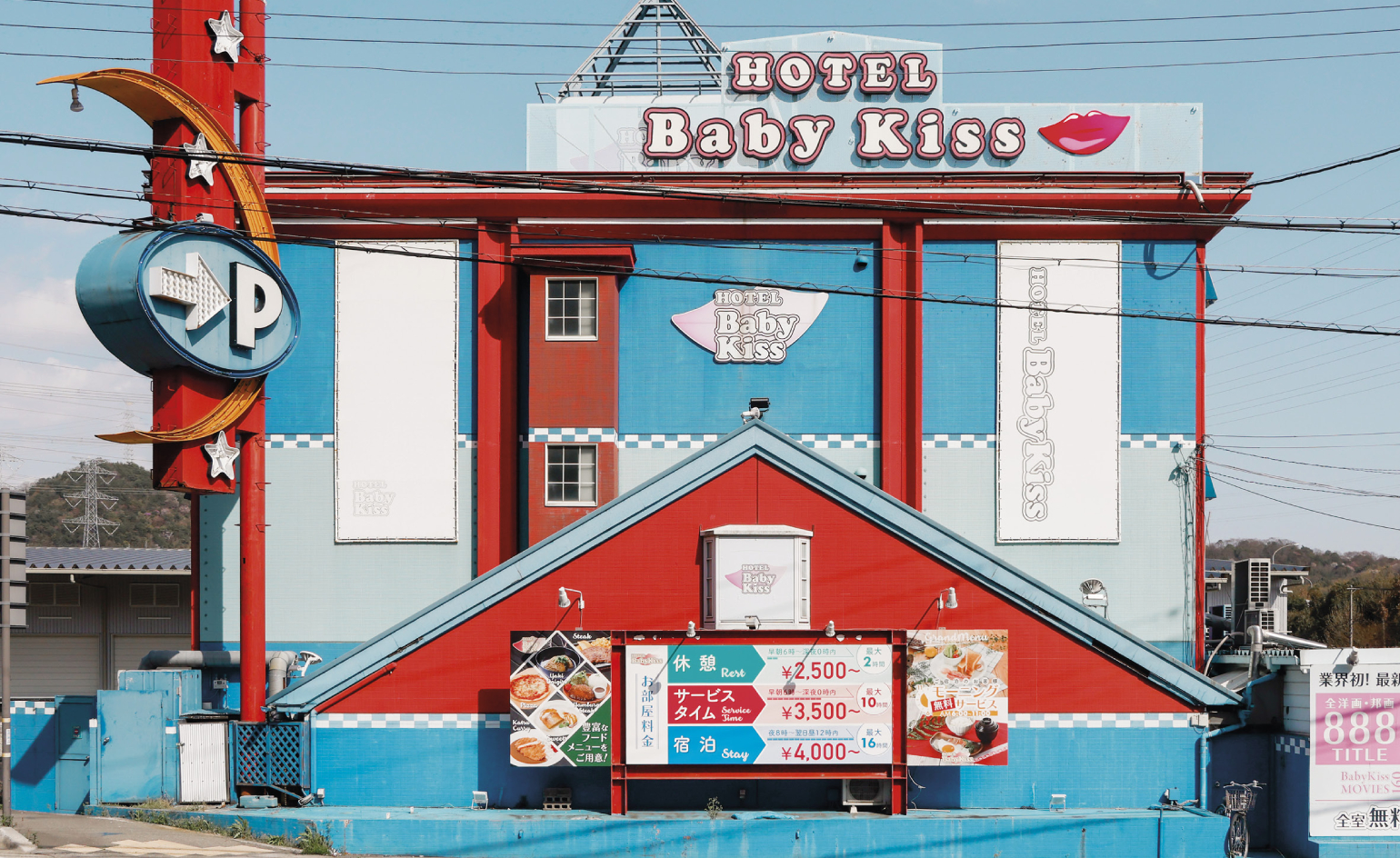 A new book captures the kitschy allure of Japanese ‘love hotels’
A new book captures the kitschy allure of Japanese ‘love hotels’For his latest project, French photographer François Prost documents the whimsical façades that characterise these erotic roadside venues.
By Sofia de la Cruz
-
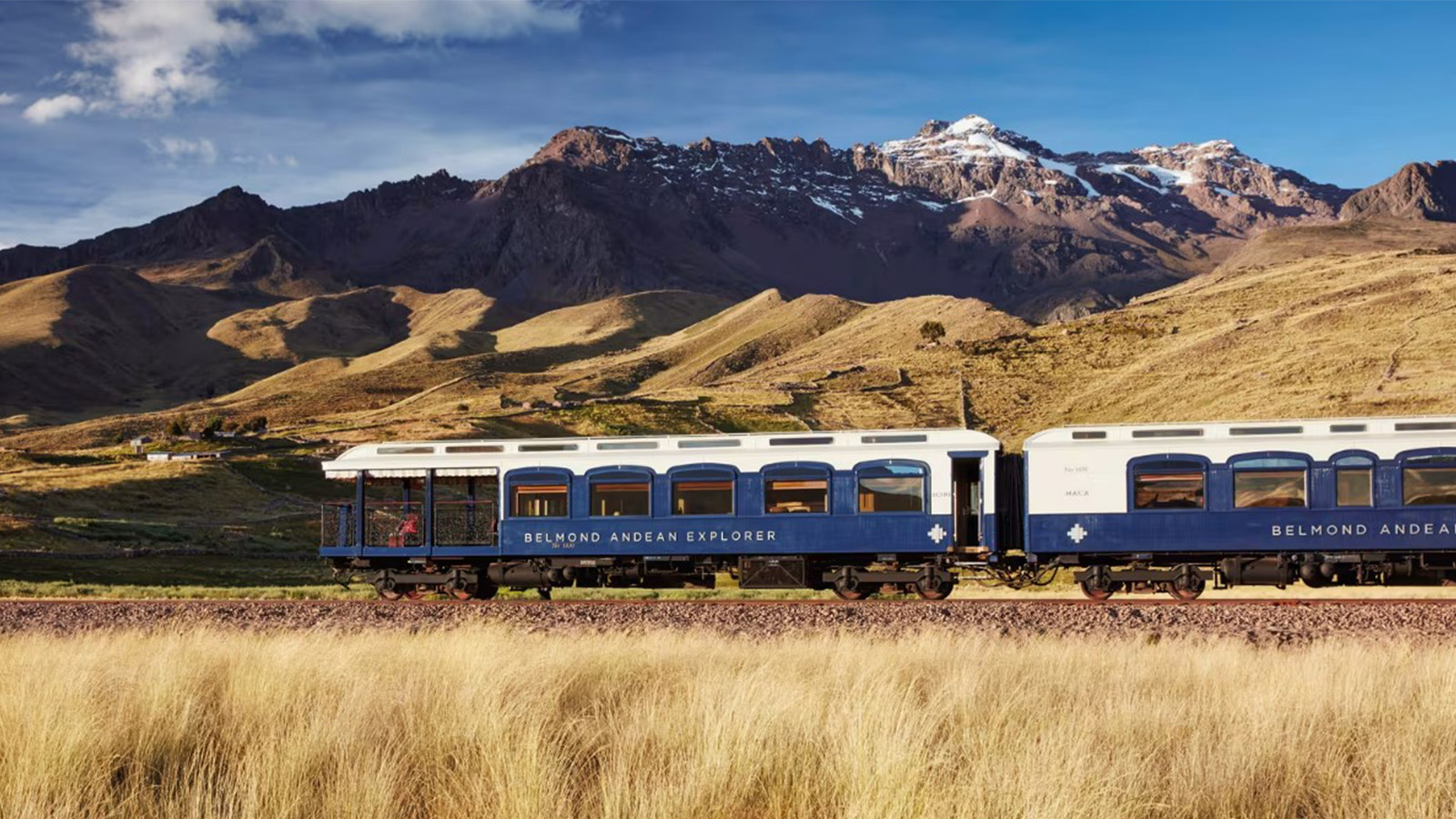 All aboard the world’s most luxurious train journeys
All aboard the world’s most luxurious train journeysStay on track with our pick of the most luxurious train journeys around the world, whether in 1920s-style opulence or contemporary chic
By Tianna Williams
-
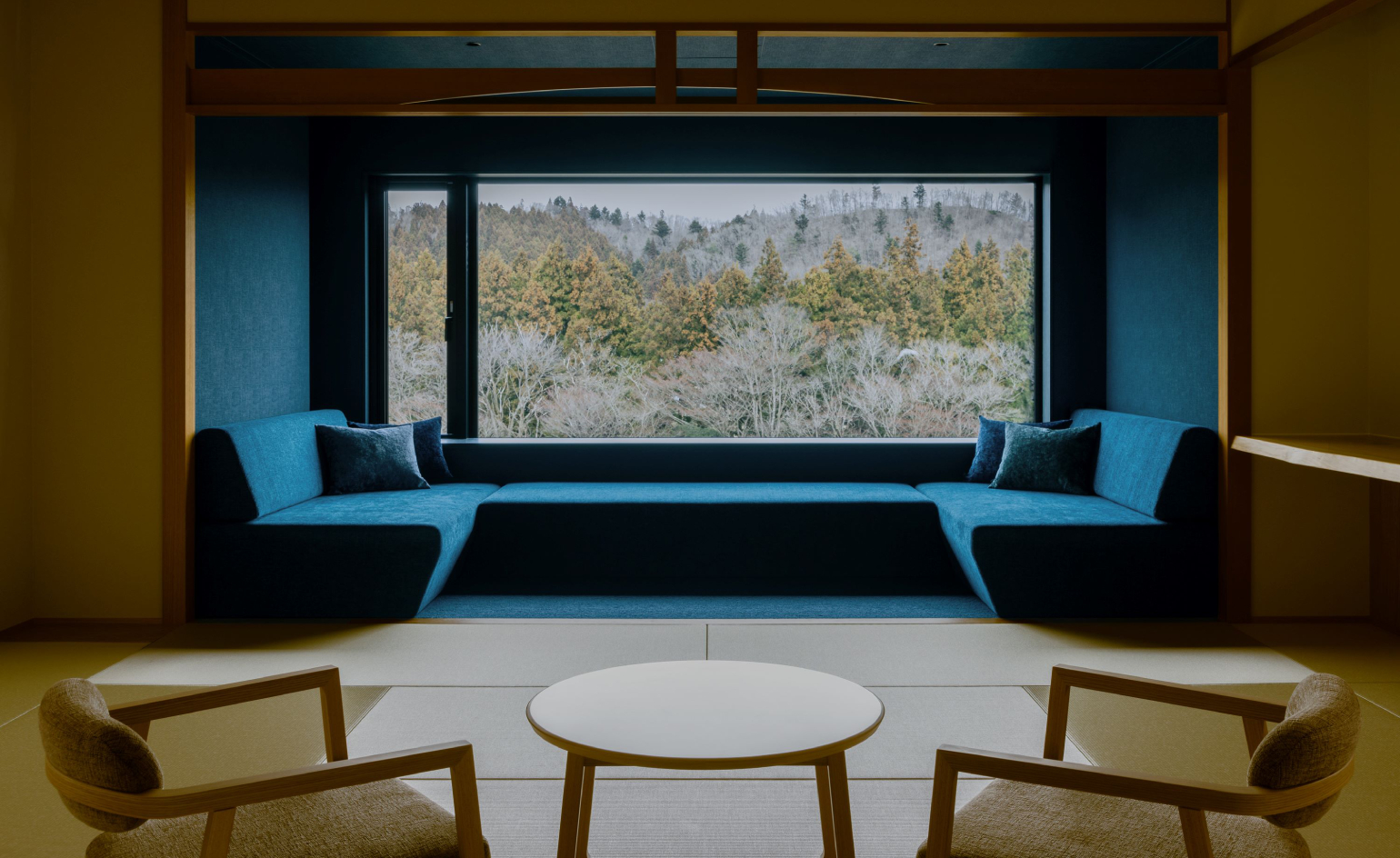 Wallpaper* checks in at Hoshino Resorts KAI Akiu: a soothing onsen hotel
Wallpaper* checks in at Hoshino Resorts KAI Akiu: a soothing onsen hotelIn Japan’s bucolic northeast, Hoshino Resorts KAI Akiu breathes new life into a sleepy hot spring village without betraying its ancient roots
By Eric Millman
-
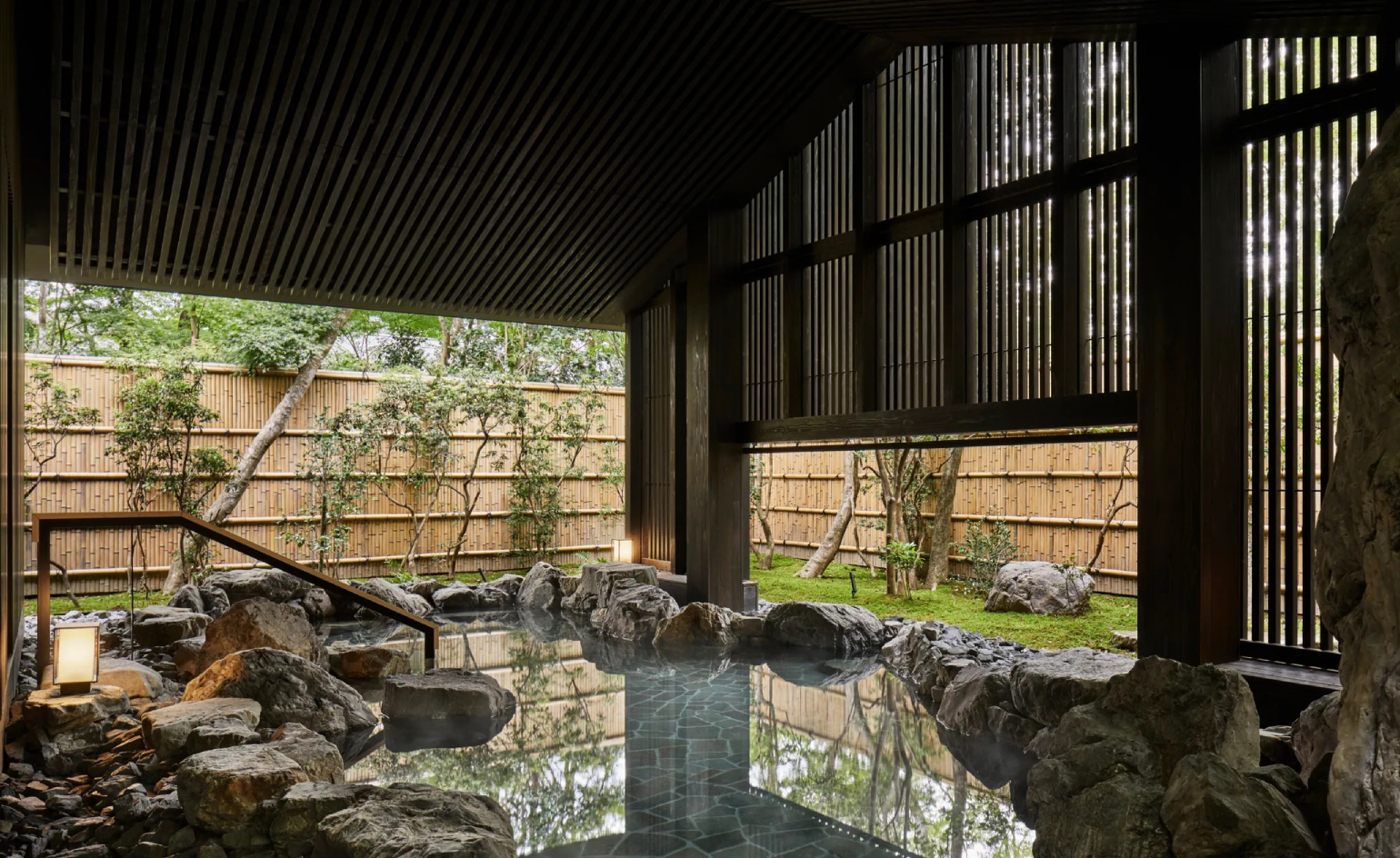 Shake off the winter chill at these design-led onsen hotels in Japan
Shake off the winter chill at these design-led onsen hotels in JapanWhether you’re heading to the mountains of Hokkaido or the alleys of Kyoto’s Gion district, these immaculately designed onsen hotels will keep the shivers at bay
By Jen Paolini
-
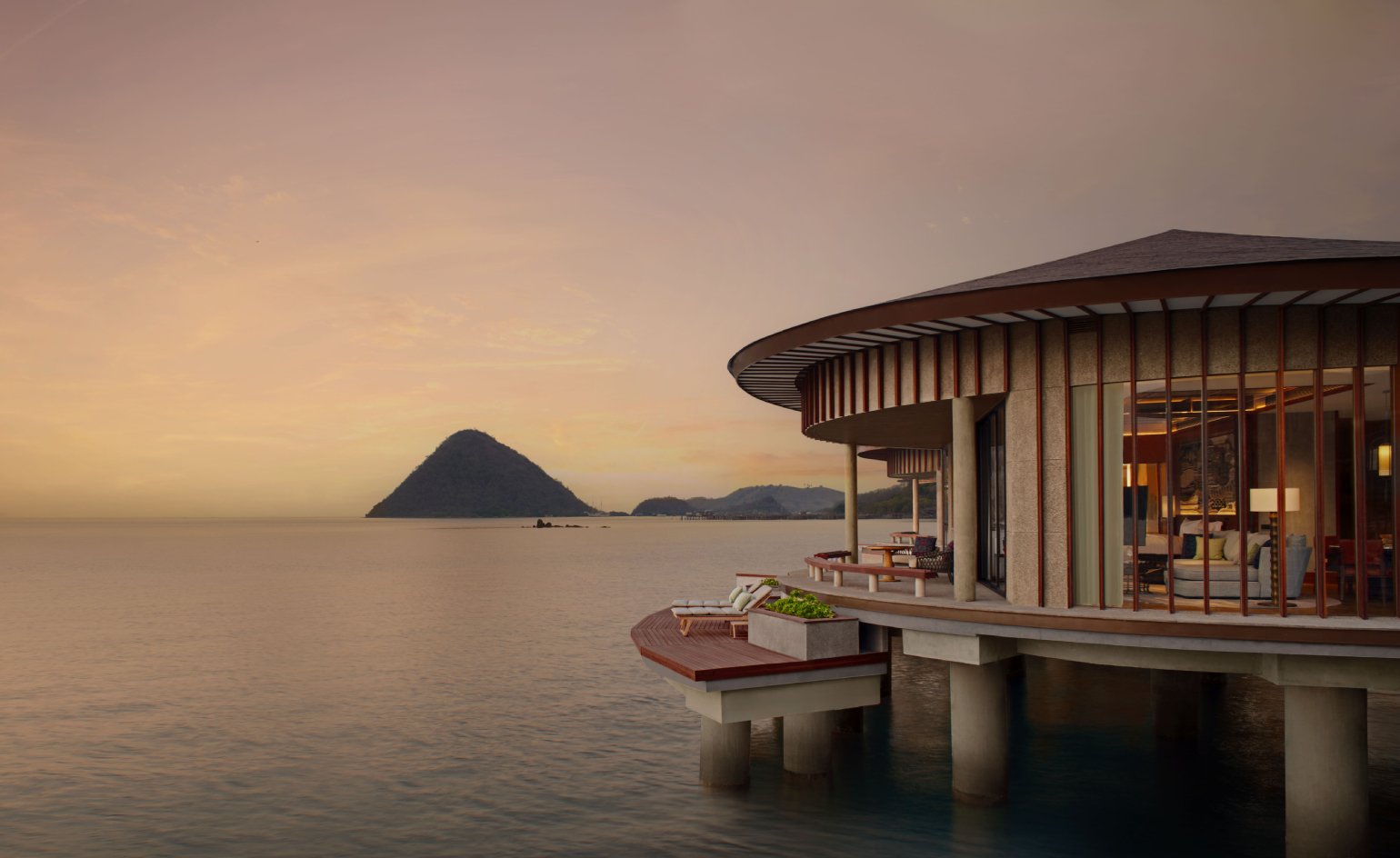 The new hotels you’ll want to stay at in 2025
The new hotels you’ll want to stay at in 2025Where to stay in 2025? Let six of the most-read-about hotel openings of the past 12 months inspire your escape – from a tiny Tokyo bolthole to a Tanzanian safari retreat
By Sofia de la Cruz
-
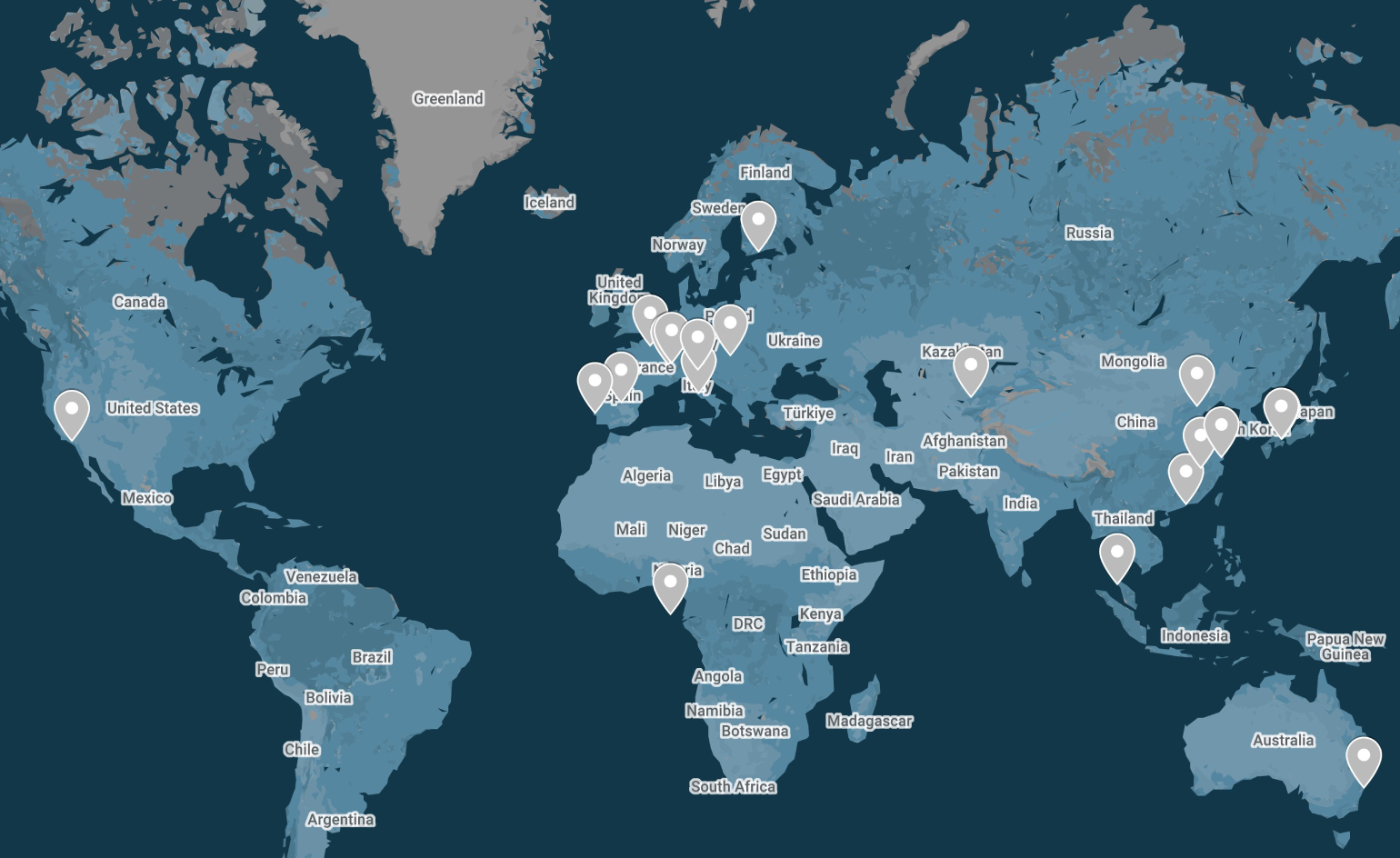 2025 getaways: where Wallpaper* editors will be travelling to this year
2025 getaways: where Wallpaper* editors will be travelling to this yearFrom the Japanese art islands of Naoshima and Teshima to the Malaysian tropical paradise of Langkawi, here’s where Wallpaper* editors plan to travel to in 2025
By Sofia de la Cruz
-
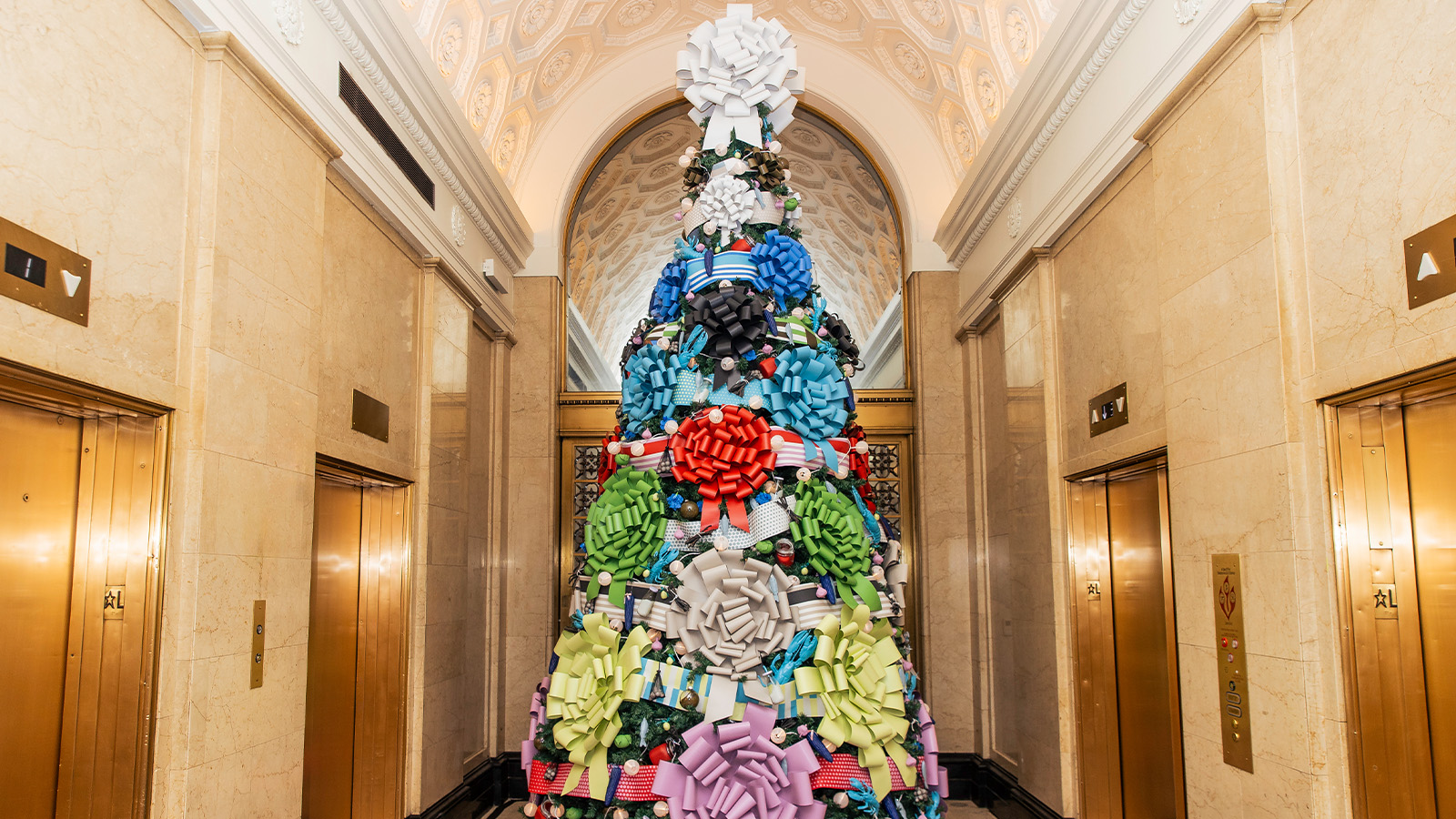 The most whimsical hotel Christmas trees around the world
The most whimsical hotel Christmas trees around the worldWe round up the best hotel Christmas tree collaborations of the year, from an abstract take in Madrid to a heritage-rooted installation in Amsterdam
By Tianna Williams
-
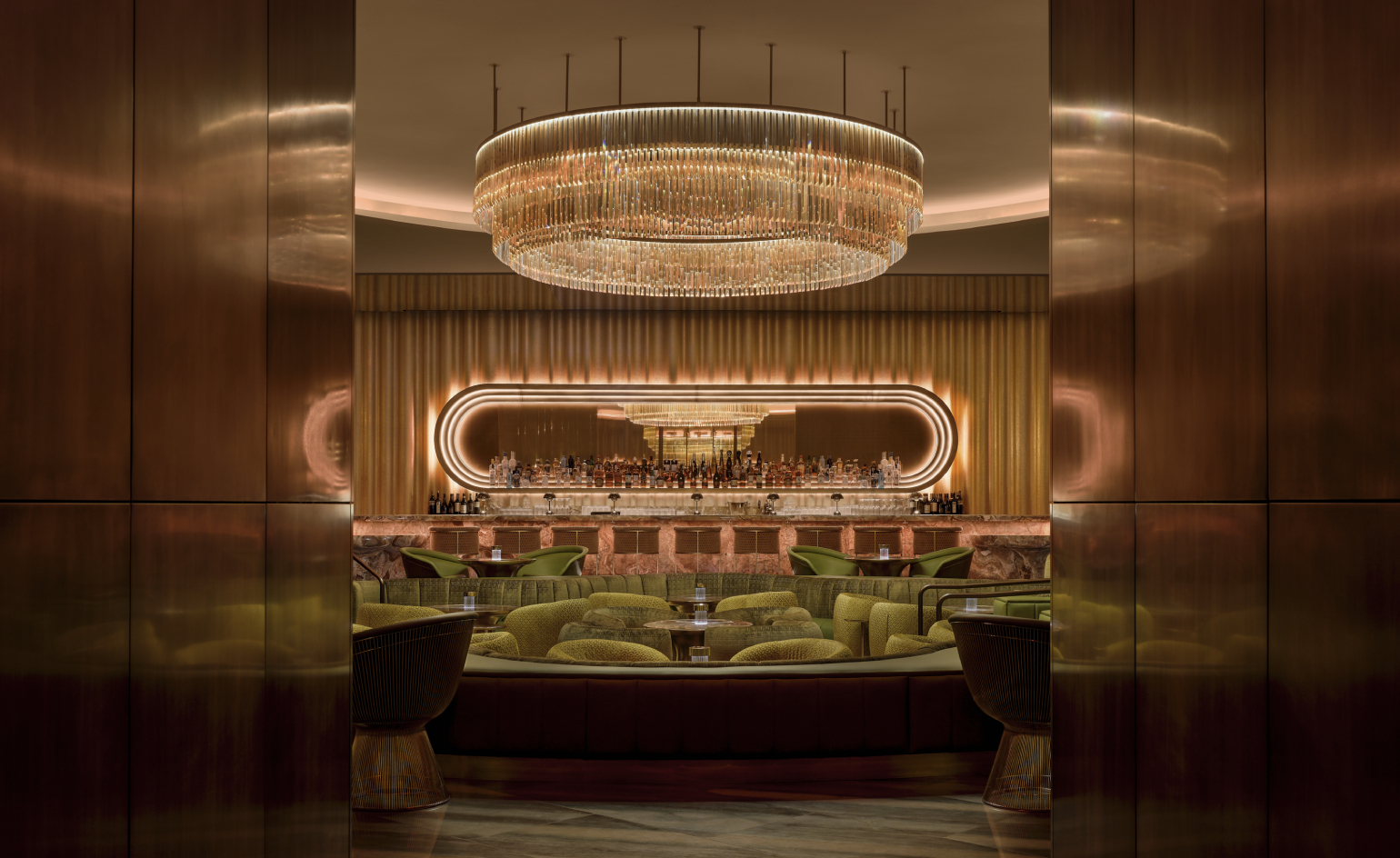 Six brilliant bars for your 2025 celebrations, hot off the Wallpaper* travel desk
Six brilliant bars for your 2025 celebrations, hot off the Wallpaper* travel deskWallpaper’s most-read bar reviews of the year can't be wrong: here’s inspiration for your festive and new year plans, from a swanky Las Vegas lounge to a minimalist London drinking den
By Sofia de la Cruz